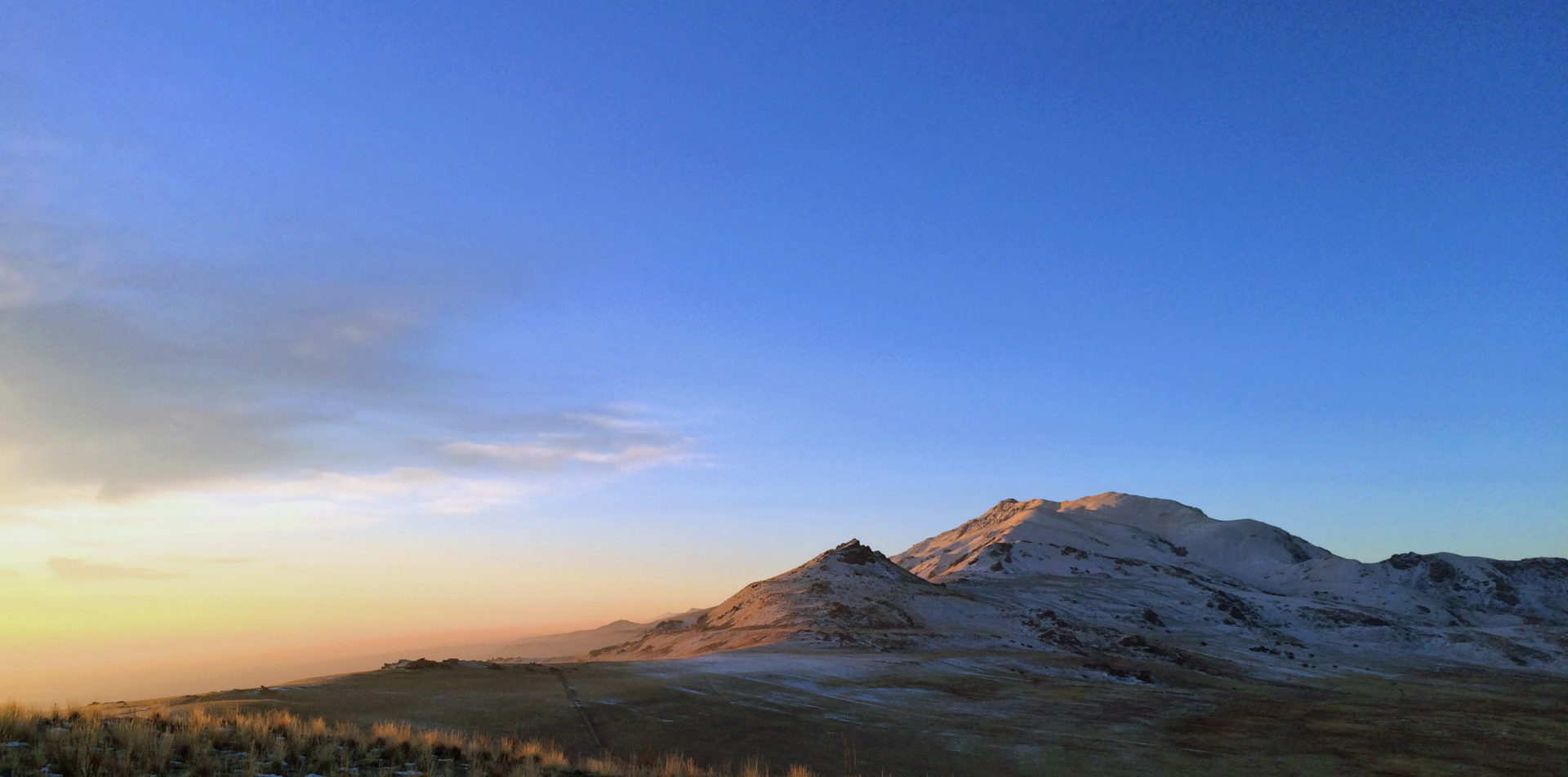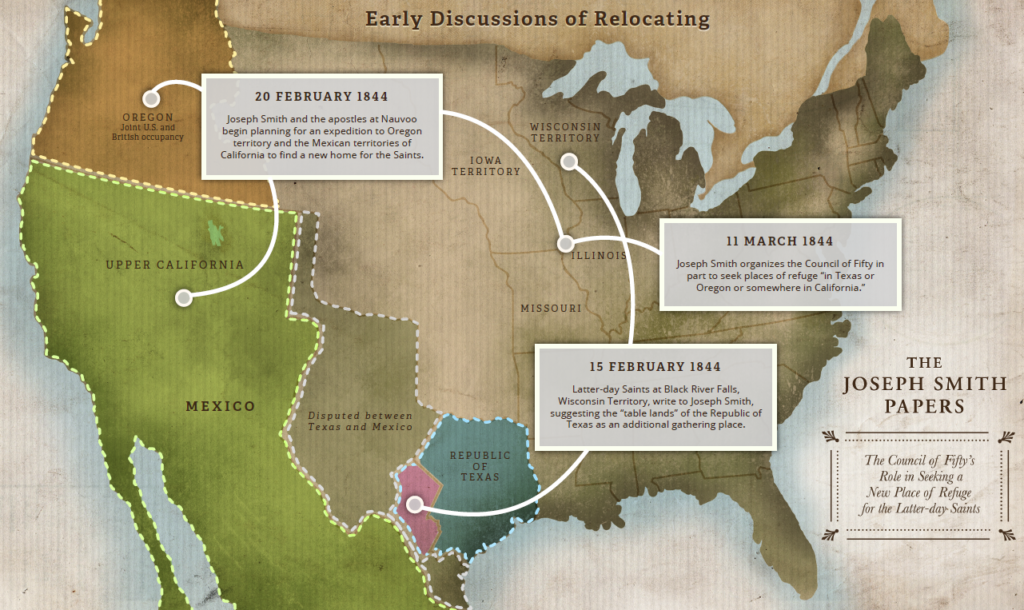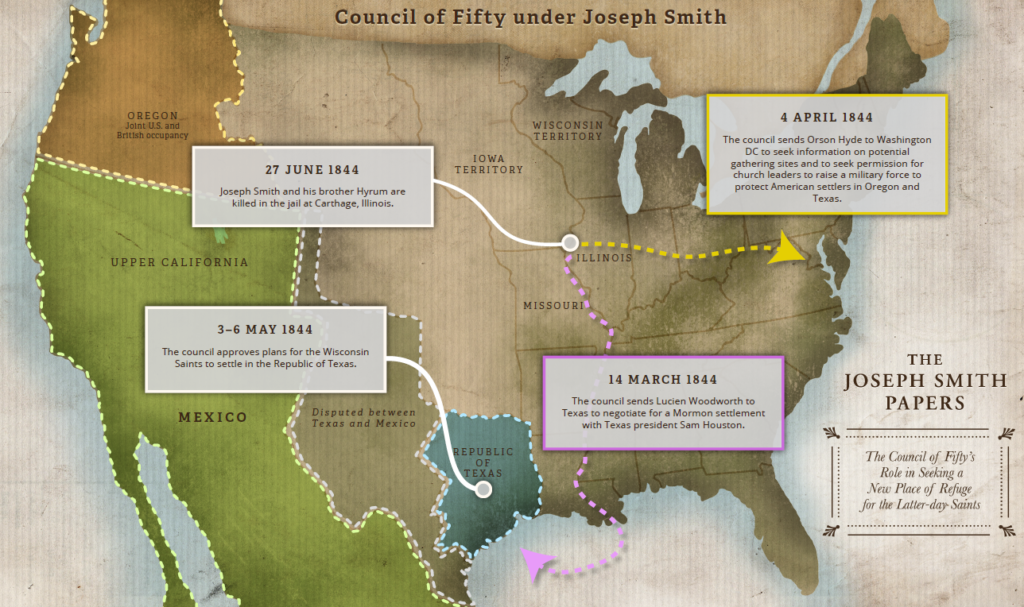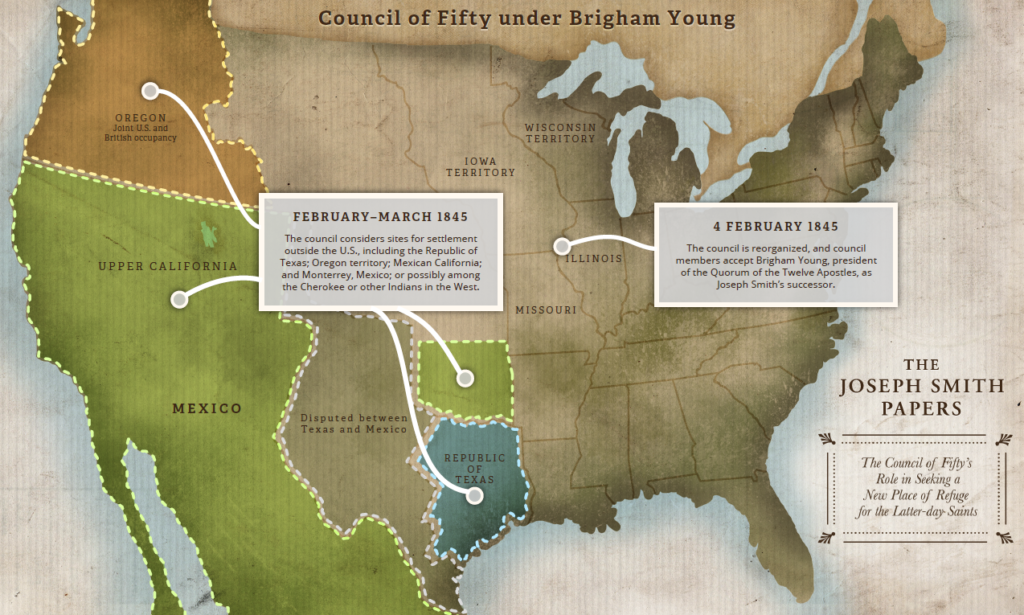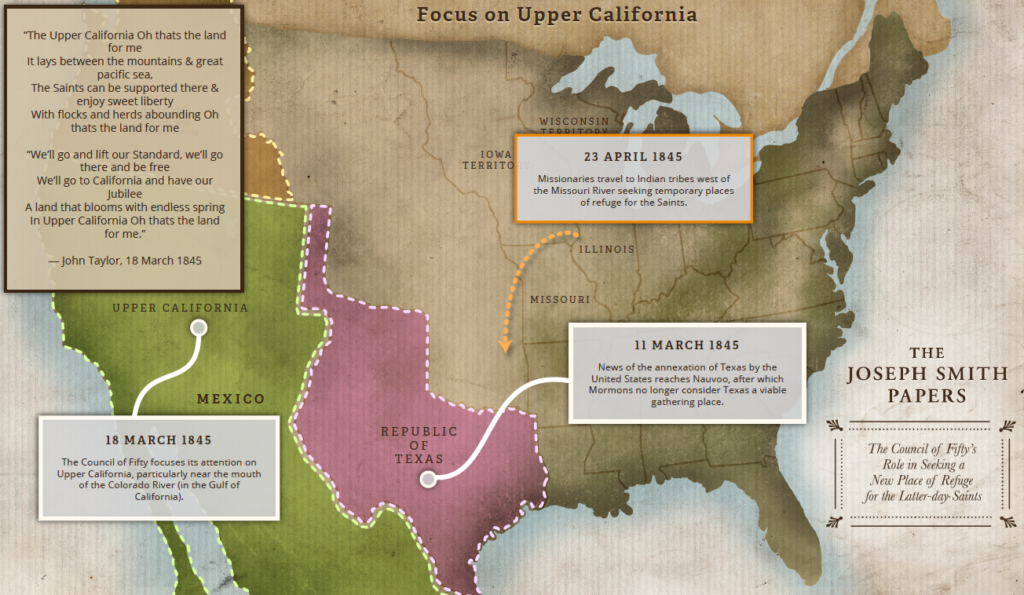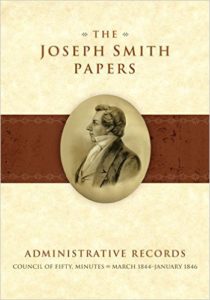 Administrative Records Vol. 1, Council of Fifty Minutes, March 1844-January 1846
Administrative Records Vol. 1, Council of Fifty Minutes, March 1844-January 1846
The Joseph Smith Papers
Salt Lake City: Church Historians Press, 2016
Available for PURCHASE now.
The Council of 50 Minute Book; or The Mormons Look West: or the Mormons get the heck out of Dodge; or the Mormons Declare the United States a Failure and Seek to Escape; or any other number of provocative titles.
This is likely the most highly anticipated volume of the Joseph Smith Papers project (where I worked for about two year – Documents Vol. 4, which I helped write, is available now). The council minutes have not been available to the public and it has long been a “holy grail” document for Mormon historians. Locked in the 1st Presidency vault at LDS church headquarters for decades, many have speculated what it might contain. While there is much new and revolutionary content in the volume, its being under lock and key seems to be more the product of institutional inertia than any effort to hide damaging or inflammatory content. The volume does present a more complicated view of early Mormon leadership than simplified narratives have crafted, there is nothing earthshaking. For instance, strong anti-American and anti-government rhetoric will surely shock many Mormon readers, but in context, it enriches the Mormon narrative and gives life and personality to members of the early LDS movement who faced dire circumstances during the volume’s span of March 1844 – January 1846.
This is likely the only JSP volume that will interest Western historians and we should take note. Indeed, the task of finding a home for the Mormons in the West and outside of the United States is one of the volume’s primary themes.I have long argued that Mormon history could (and should) be re-read as a frontier/borderlands history. Whether in Missouri, Illinois, or Utah, much of early Mormon history unfolded in the context of being on the edge (or beyond the edge) of the growing American empire. It is a Western history.
More on that below, but first, some background and overview. The confidential council was established by Joseph Smith as a forum to discuss and resolve secular matters (there were other concurrent ecclesiastical councils being held, and the overlap between them is surprisingly low). In the broadest terms, the Council of 50 (prominent Mormons and a handful of non-Mormons in and around Nauvoo, Illinois) was trying to resolve the Mormon’s troubled relationship with the United States. Though the church preached that the founding of America was inspired by God and that the constitution was an inspired document, the nation had failed to live up to its promised ideals. The constitution was an “old dead horse head” or “carcass.” Specifically, the local, state, and federal governments had failed to protect minority (Mormon) rights. To this end, Joseph Smith ran a presidential campaign in 1844 based on promising equal protection under the law for all (including religious minorities). Expecting that endeavor may well fail, the council also turned West and began seeking a location to resettle the church where it could establish a government that would protect minority rights. After the martyrdom of Joseph Smith on 27 June 1844, the despair and acrimony over the failure of American democracy deepened.
This volume includes a number of the efforts to secure a homeland in the West. Delegates were sent to Sam Houston and the Republic of Texas, Great Britain (look towards the Pacific Northwest and Vancouver Island), as well as various Native American nations.
Consider this great set of maps produced by the JSP and Jeff Mahas.
There was a serious interest in finding common ground and alliance with Native peoples (who also struggled with an expanding American empire) in the West prior to and in preparation for their own sojourn West. Often, the histories of Mormon-Indian relations have focused on proselytism. While that impulse is still present, these interactions are more about geopolitics, diplomacy, and (even military) alliance. Once the Republic of Texas is annexed into the United States, the council shifts to Northern Mexico and the Great Basin as the primary candidate. It is striking to see Mormon leaders opine on the need to leave the United States, ally with Native peoples in the West, and establish a new government. As history would unfold, by the time Mormons established themselves in the Great Basin it would be quickly integrated into the United States. The volume also includes early portions of the re-booted Council of 50 convened by Brigham Young in the early Utah period.
Western historians will find much to dig through here. Perhaps most importantly, it reintroduces a sense of contingency to Mormon history in the West. Too often the Mormon narrative skips from the martyrdom of Joseph Smith straight to Brigham Young leading the Saints across the Great Plains. With this record available, we can now pause and understand the almost 2 years of uncertainty and debate about where the Mormon story would lead.
Mormon historians (and lay Mormons) will find this volume revelatory. It is perhaps the most complete, clean-reading, council record we have. Joseph Smith styled this as a forum where opinions could be openly shared. At an early meeting when the group was congratulating itself on being “of one mind,” Joseph Smith chided the group stating that he wanted people to speak openly, even disagree. He didn’t want to be surrounded by a bunch of sycophant yes-men “dough-heads.” Fittingly, many of the opinions shared are more on the wild side than Mormon readers may be accustomed to.
There are a number of other things this volume offers, but I’ll leave it at this. This is a must read for Mormon historians and a should read for Western historians interested in 1840s frontier America. More information here and here.
